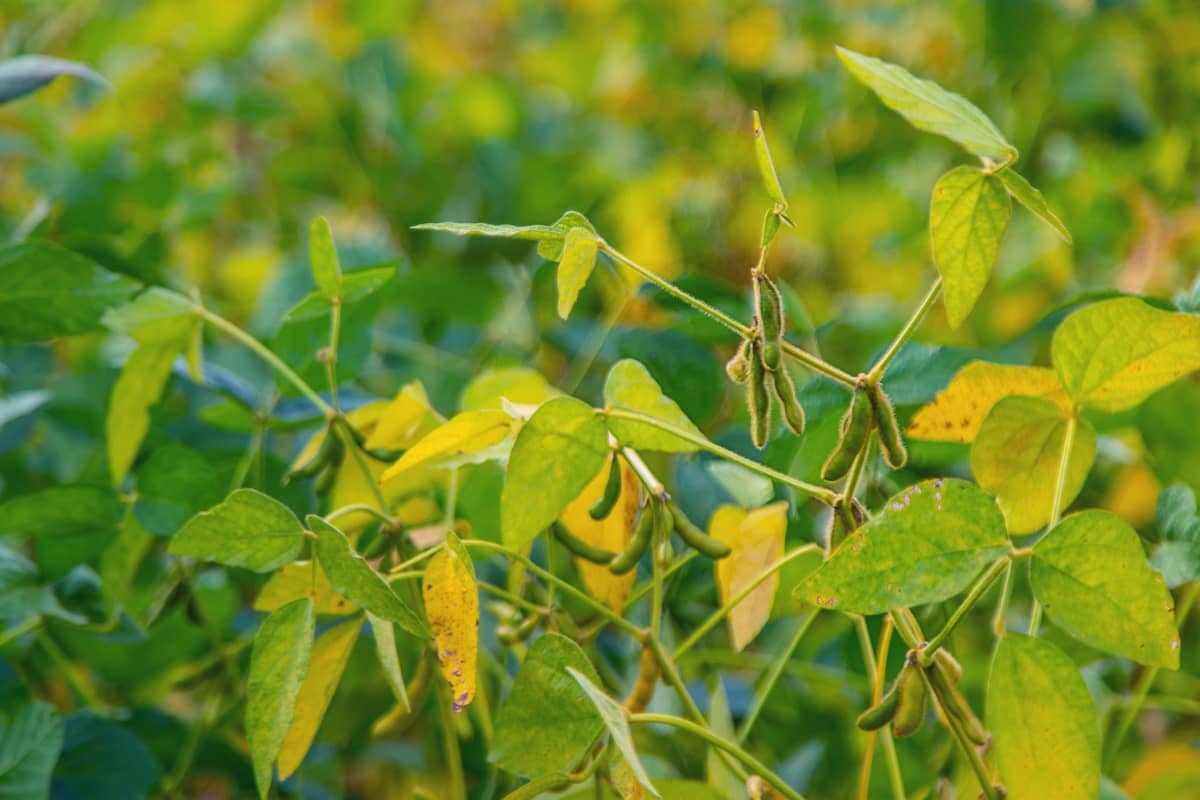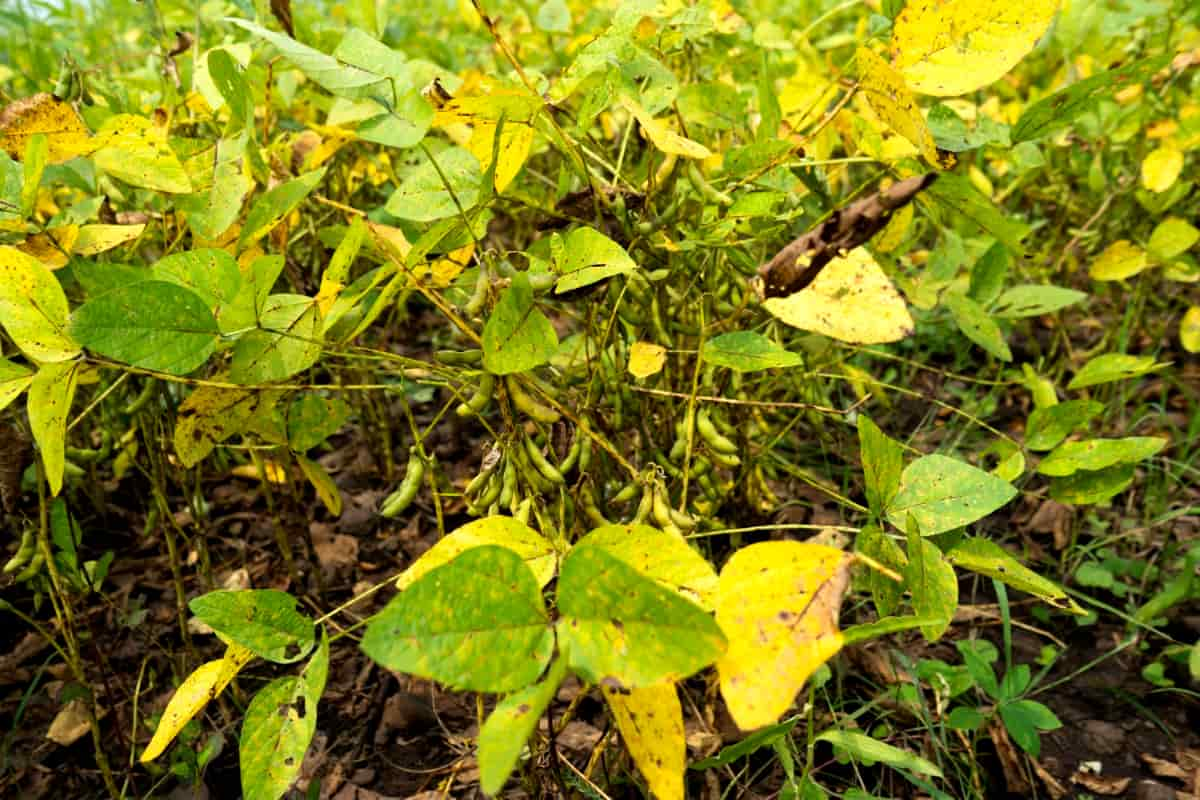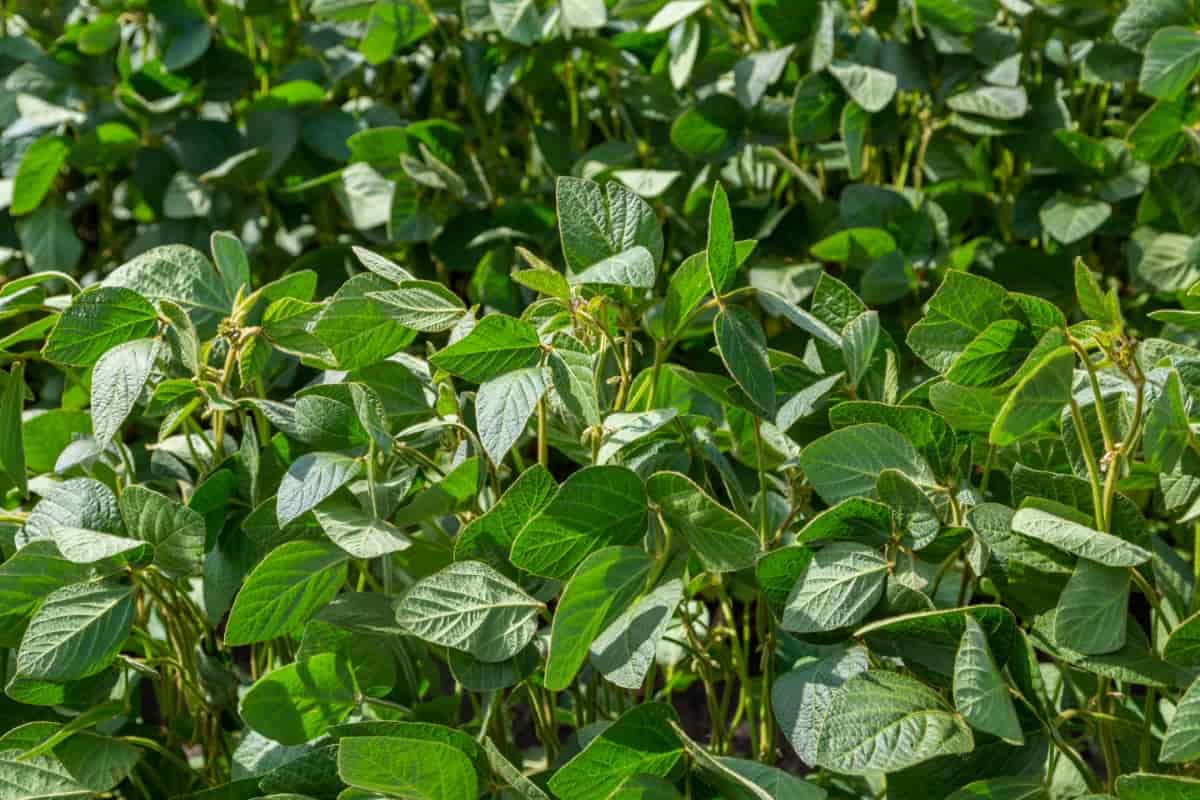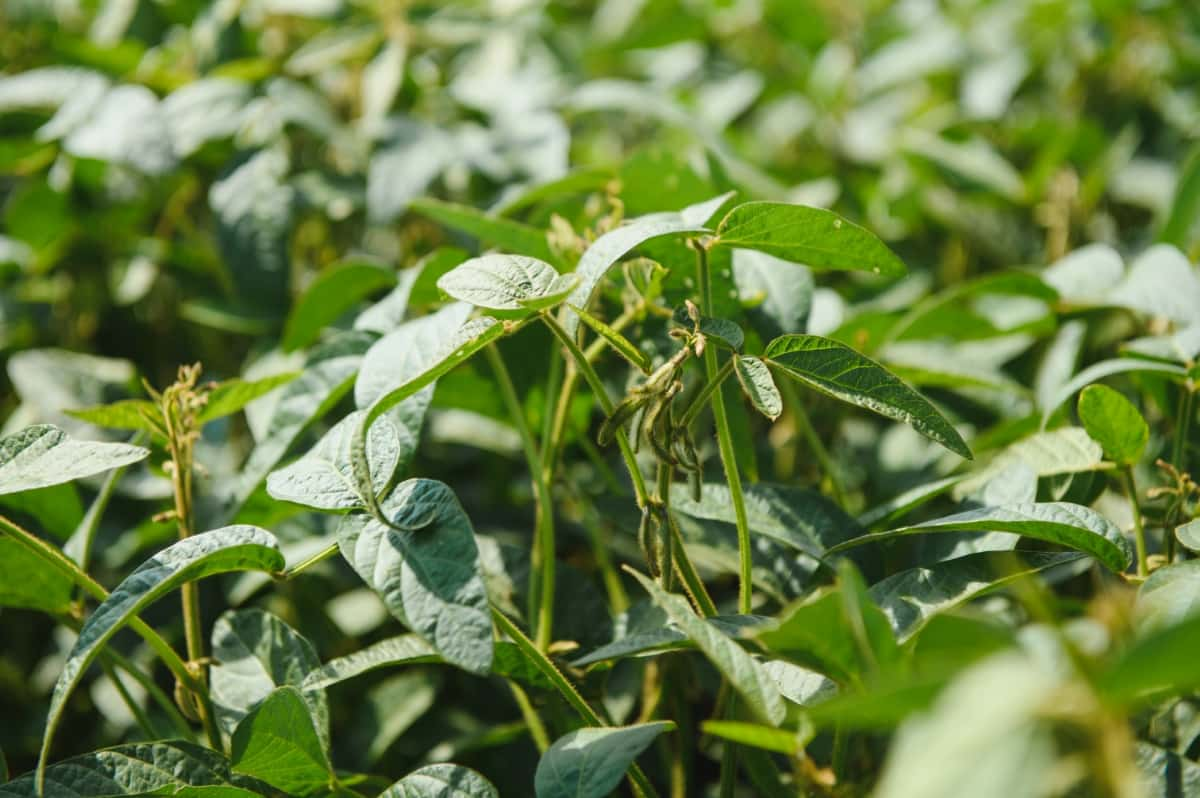Find practical solutions to soybean crop red crown rot. Examine ways to avoid, such as fungicide treatments and cultural practices, in addition to detecting resistant soybean types and symptoms. To lessen the effect of red crown rot on soybean output, learn about crop rotation, soil health management, and biological control methods.

How to Manage Red Crown Rot in Soybean
Introduction to Red Crown Rot in Soybeans
Overview: Red crown rot (RCR), caused by the fungus Calonectria ilicicola, poses a serious threat to soybean crops. It leads to root and stem rot, resulting in yield losses. Although it was initially of little interest due to low incidence, recent reports in Illinois and Kentucky have highlighted its impact on soybean production. Understanding RCR is crucial for effective management.
Pathogen and Spread
- Calonectria ilicicola (also known as Cylindrocladium parasiticum) causes RCR.
- The fungus survives as microsclerotia in crop residue and soil, persisting for years and spreading locally via wind and farm equipment.
- Management relies on crop rotation (to reduce microsclerotia) and cultural practices like late planting and improved drainage.
Early Detection: Recognizing Symptoms of Red Crown Rot
- Foliar Symptoms: Develop after R3 (flowering stage).
- Light-yellow discoloration progresses to interveinal necrosis, chlorosis, leaf death, and defoliation.
- Similar to sudden death syndrome, brown stem rot and stem canker.
- Stem Symptoms: Reddish discoloration of the lower stem.
- Vascular tissue may show brown to gray discoloration.
- The tissue below the epidermis remains unaffected.
- High moisture late in the season leads to white hyphae and red to rusty-brown spore-bearing structures.
- Roots: Infected plants have rotted roots and are easily pulled.
Differentiating Red Crown Rot from Other Soybean Diseases
For an accurate diagnosis and focused treatment, it is essential to distinguish the symptoms of red crown rot from those of other soybean diseases. The unique browning and rotting of the lower stem and crown distinguish red crown rot from other diseases. It is crucial to comprehend these unique symptoms in order to effectively treat the condition.
Factors Influencing Red Crown Rot Development
The Role of Climate and Soil Conditions in Disease Proliferation
Red crown rot spreads due in part to soil and climate factors. circumstances of warm, damp soil combined with inadequate drainage provide ideal circumstances for the growth and dissemination of the illness. To effectively adopt targeted management strategies, it is important to comprehend the impact of soil conditions and climate.
Crop Rotation and Its Effect on Red Crown Rot Incidence
In soybean fields, crop rotation techniques may affect the prevalence of red crown rot. Reducing the disease’s prevalence may be achieved by the use of non-host crops in crop rotation plans that are successful. It’s crucial to avoid growing soybeans continuously in the same field in order to lessen the effects of red crown rot.
In case you missed it: Blossom Fruit Rot in Bottle Gourd: 100% Effective Treatment and Control Solutions

Cultural Management Practices to Prevent Red Crown Rot
Implementing Effective Crop Rotation to Mitigate Disease Risk
Strategic crop rotation, including the rotation of soybeans with non-host crops, is an important cultural management practice for mitigating the risk of red crown rot. This practice disrupts the life cycle of the pathogen and reduces its survival and spread in the soil. Implementing effective crop rotation strategies is essential for disease prevention.
Soil Management Strategies to Reduce Pathogen Survival
Two key soil management techniques for lowering the survival and spread of the red crown rot pathogen are enhancing soil drainage and decreasing soil compaction. In soybean fields, good soil management techniques reduce the disease’s favorable circumstances and help to avoid it altogether.
Selection of Resistant Varieties
Advances in Breeding for Red Crown Rot Resistance
Advancements in breeding programs aim to develop soybean varieties with enhanced resistance to red crown rot. Research efforts focus on identifying and incorporating resistance traits into soybean plants, providing durable protection against the disease. Selecting and planting resistant varieties is essential for effective disease management.
The Importance of Choosing the Right Soybean Varieties
Choosing soybean varieties with inherent resistance to red crown rot is crucial for disease management. Working with seed companies and agricultural experts to identify and select resistant varieties adapted to specific growing conditions is essential for mitigating the impact of the disease on soybean crops.
Chemical Control Measures
Appropriate Use of Fungicides for Red Crown Rot Management
Fungicide applications, when used judiciously, can contribute to the management of red crown rot in soybean fields. Research continues to explore effectiveness of specific fungicides in mitigating the disease’s impact. However, the integration of fungicide applications with other management practices should be carefully considered.
Timing and Application Techniques for Optimal Effectiveness
Fungicides’ timing and application techniques are critical for their optimal effectiveness in managing red crown rot. Following recommended application timings and techniques, as well as considering environmental and crop growth factors, is important for maximizing the impact of fungicide treatments on disease management.
In case you missed it: Top 10 Homemade Remedies for Brown Rot Organic DIY Sprays for Treatment and Prevention

Biological Control and Natural Remedies
Exploiting Beneficial Microorganisms to Combat Red Crown Rot
Beneficial microorganisms are one kind of biological control agent that may be able to help prevent red crown rot in soybean crops. The goal of this field’s research and development is to find and use biological control agents that can inhibit the red crown rot pathogen’s activity and lessen the severity of the illness. For the management of red crown rot in a sustainable and ecologically friendly manner, investigating the use of biological control agents as part of an integrated disease management strategy has potential.
Integrating Biological Control Methods into Soybean Farming
Integrating biological control methods, such as the application of beneficial microorganisms, into soybean farming practices can contribute to the overall management of red crown rot. By harnessing the natural antagonistic properties of beneficial microorganisms, growers can reduce the disease’s impact on their soybean crops and promote sustainable disease management.
Integrated Disease Management (IDM) for Red Crown Rot
Combining Cultural, Chemical, and Biological Strategies
Integrated Disease Management (IDM) involves the integration of cultural, chemical, and biological control strategies for comprehensive red crown rot management. By combining these approaches, growers can effectively target different aspects of the disease and minimize its impact on soybean crops. Implementing an IDM approach is essential for sustainable disease management.
Monitoring and Decision-Making in IDM Approaches
Regular monitoring of soybean fields for red crown rot symptoms and the establishment of threshold levels based on disease severity are essential for making timely management interventions. Implementing a proactive monitoring and intervention strategy enables growers to address red crown rot outbreaks promptly and minimize yield losses.
In case you missed it: How to Prevent Blossom End Rot: Causes, Identification, Symptoms, and Treatment

Conclusion
To successfully manage red crown rot in soybean fields, a mix of cultural measures, fungicide treatments, and resistant soybean cultivars must be used. Farmers may protect their harvests from this damaging illness by emphasizing preventive measures and keeping up with the most recent findings.
- Natural Solutions for Pest Control in Flower Gardens
- Types of Fungicides Used in Agriculture
- Common Issues in the Fruit Development Stage of Pomegranate Farming
- Fruit Development Issues in Papaya: Easy Solutions and Treatment
- Soil-Borne Diseases and How to Protect Your Plants
- Practices to Prevent Disease Spread in the Garden
- From Wilted to Thriving: How to Treat Root Rot Naturally in Houseplants
- Natural Remedies to Cure Brown Spots on Fig Tree Leaves
- Natural Solutions for Poinsettia Problems: 100% Effective Remedies